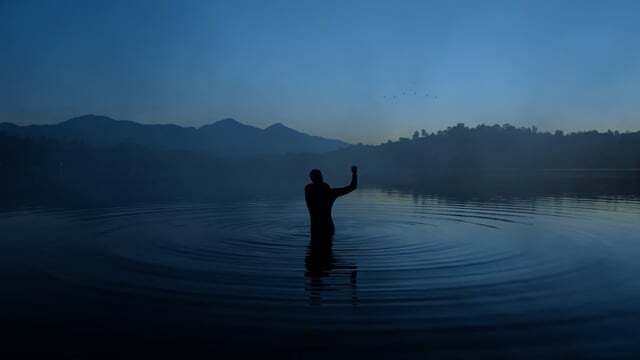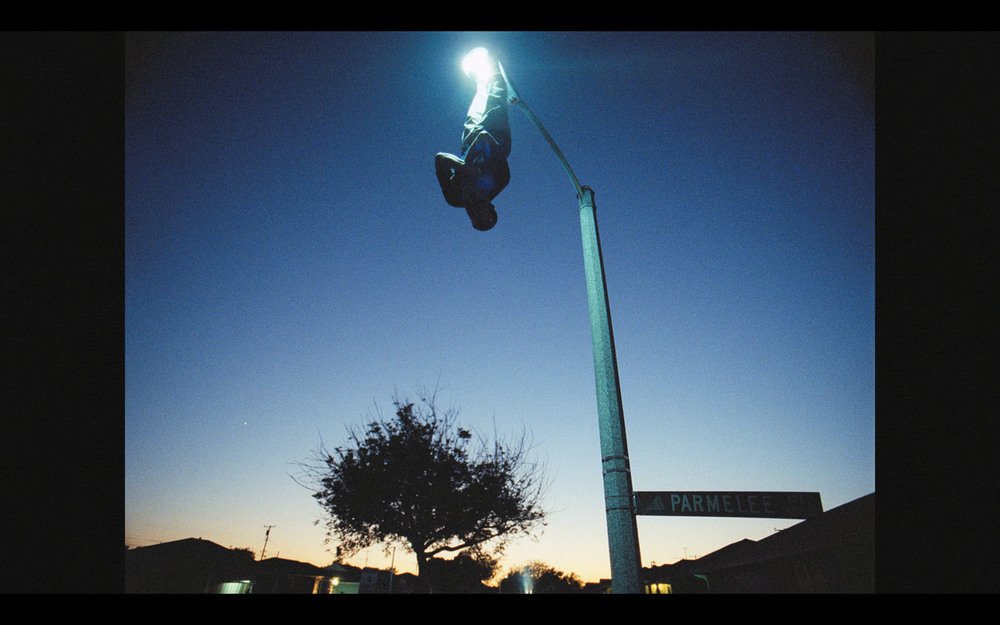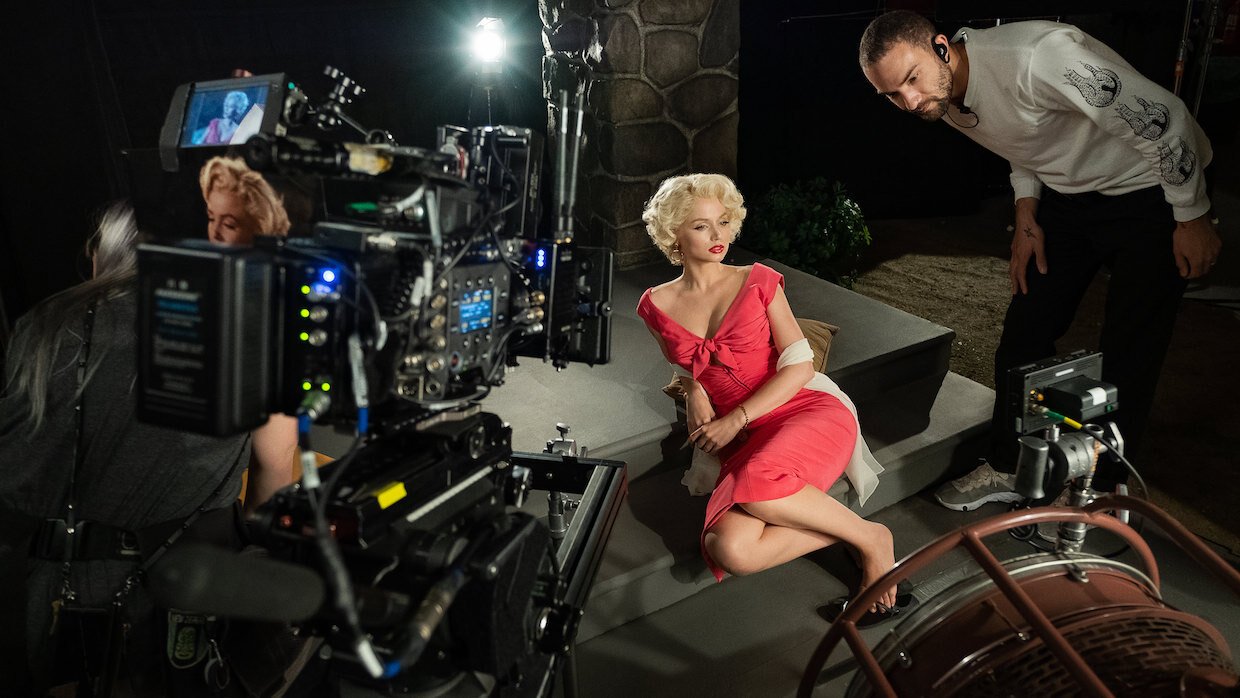Chayse Irvin
Don’t Go Tellin’ Your Momma, dir. Topaz Jones, Simon Davis, Jason Sondock, 2021
ABOUT THE ARTIST
Chayse Irvin is a Canadian cinematographer who has worked in numerous films, art installations, commercials, and music videos. His cinematography for Andrea Pollaoro’s Medeas (2013) earned him the best debut-cinematographer award at the 2013 Camerimage Film Festival. Irvin continued to work with Andrea Pollaoro and won the best cinematography “Silver Hugo” award at the 2017 Chicago International Film Festival for Pollaoro’s Hannah (2017).
Irvin became more widely known for his experimental collaborations with Kahlil Joseph. He created stunning images for a series of Kahlil Joseph’s work, including Black Mary (2017), Process (2017), Flypaper (2017), and m.AA.d (2014). In 2015, a two-channel version of m.AA.d became part of the Kahlil Joseph: Double Conscience exhibition at the Museum of Contemporary Art in Los Angeles. Additionally, Irvin and Joseph teamed up on HBO’s film Beyoncé: Lemonade (2016), a 65-minute visual album that serves as a companion to Beyoncé’s album Lemonade. Through many projects, Irvin and Joseph expressed their mutual interest in developing a relation between cinematography and jazz improvisation. Irvin describes his artistic practice and praxis as a “process” and “woodshedding,” which refers to intensive practicing and rehearsing for the sake of flawless musical composition. About “woodshedding,” Irvin has said: “I come from a family of jazz musicians, and in jazz, woodshedding means isolating yourself to rehearse so you can come up with a harmonic device to pull out of your pocket during a set to take you out of the ordinary. I woodshedded on weekends during the shoot, creating devices to provoke a response in myself. I wanted to listen and learn.” Irvin’s “woodshedding” thus moves in and out of isolation and collaboration as well as preparation and improvisation. His image-making is a mode of listening while at the same time learning with others.
Irvin’s collaboration with Joseph opened up another channel of experimentation with cinematic images. For Spike Lee’s BlacKkKlansman (2018), Irvin experimented with both analog and digital film. He used specific vintage lenses while simultaneously leaning on the “grainless look of modern film stocks.” Most recently, Irvin worked as a cinematographer for Andrew Dominik’s Blonde (2022). Influenced by the work of British photographer Bill Brandt, Irvin created a distorted imagery he describes as a manifestation of “astigmatism” that not only generates the effect of “asigmatic irregularity” but also forms a bright cinematic flare. Additionally, by collaborating with his long-time dailies colorist Benny Estrada, color scientist Joachim “JZ” Zell, colorists Dustin Wadsworth and Tom Poole, Irvin rendered the imagery soft and tinted akin to Kodak’s Kodachrome.
Irvin acted as a cinematographer for numerous music videos, including those with Topaz Jones, Jay-Z, Leon Bridges, The xx, Porter Robinson, Just Blaze. His cinematography for Don’t Go Tellin’ Your Momma, specifically the opening shot of the music video, generates what Alessandra Raengo and Lauren Cramer, both together and separately, would describe as “an aesthetics of suspension.” His cinematography comes to function as a bridge between cinema and photography, as well as the popular and the avant-garde.
Irvin shot commercials for Apple, Google, Gatorade, Heineken, Sephora, Samsung, and Ford. At the 2017 Cannes Lions International Festival of Creativity, Irvin won Silver and Bronze Lion awards for his work on “Squarespace: Who is John Malkovich.com?” and “Apple Watch Series 2: Go Time,” respectively.
SELECT WORKS
Cinematographer—Film and Art Installation
Jackals & Fireflies (2023), dir. Charlie Kaufman
Blonde (2022), dir. Andrew Dominik
A Pity (2022), directors Kevin Barth and Alec Barth
Ruby Nell Sales (2022), dir. Adam Pendleton
God’s Creatures (2022), directors Seala Davis and Anne Rose Holmer
Don’t Go Tellin’ Your Momma (2020), directors Topaz Jones, Simon Davis, & Jason Sondock
BlacKkKlansman (2018), dir. Spike Lee
Flypaper (2018), dir. Kahlil Joseph
Ishmael (2018), dir. Adam Pendleton
Hannah (2017), dir. Andrea Pallaoro
Process (2017), dir. Kahlil Joseph
Looms (2014), directors Morgan Funk, Nathan Funk, & Trevor Funk
m.A.A.d (2014), dir. Kahlil Joseph (for Kendrick Lamar)
Medeas (2013), dir. Andrea Pallaoro
Remember (2012), dir. Eliot Rausch
Cinematographer—Commercial
EE “Stay Connected” (2022), dir. James Gray
P&G Tokyo Olympics-Thank You, Mom (2021), dir. Miles Jay
Heineken “Daniel Craig vs. James Bond” (2020), dir. Miles Jay
Vogue “I Love New York” (2020), dir. Bardia Zeinali
Sephora “The Unlimited Power of Beauty” (2020), dir. Jonas Lindstroem
Apple “It Already Does That” (2020), dir. Craig Gillespie
Powerade “Earl” (2018), dir. Daniel Wolfe
Volvo “Late” (2018), dir. Miles Jay
John Lewis “Christmas 2018” (2018), dir. Seb Edwards
Macy’s “Space Station” (2018), dir. Martin De Thurah
SQUARESPACE X John Malkovich (2017), dir. Miles Jay
Volvo “Moments” (2017), dir. Gustav Johansson
Apple Watch Series 2 “Go Time” (2017), dir. Megaforce
Vogue “Just a Minute” (2015), dir. Gustav Johansson
Cinematographer—Music Video
Killer (2022), dir. Yoann Lemoine
When I get Home (2019), dir. Solange
Black Mary (2017), dir. Kahlil Joseph
Lemonade (2016), dir. Beyonce, Kahlil Joseph
River (2016), dir. Miles Jay
SELECTED INTERVIEWS
Mavity, Will. “The Next Best Picture Podcast—Interview with ‘Blonde’ Cinematographer Chayse Irvin.” Next Best Picture, January 13, 2023.
https://nextbestpicture.com/the-next-best-picture-podcast-interview-with-blonde-cinematographer-chayse-irvin/.
Mulcahey, Matt. “Chayse Irvin on Shooting Blonde in Digital Black and White and God’s Creatures in 35 mm Color.” Filmmaker Magazine, September 29, 2022.
https://filmmakermagazine.com/116744-interview-cinematographer-chayse-irvin-blonde-gods-creatures/#.Y9Kh2y-B0dU.
Film Roundtable with Chayse Irvin & Akin McKenzie, moderated by Shawn Peters, July 1, 2020. https://www.youtube.com/watch?v=QVZTcbKK1u8.
SELECTED REVIEWS
Prince, Ron. “Chayse Irvin CSC- Blonde.” Cinematography World, December 26, 2022. https://www.cinematography.world/bombshell-chayse-irvin-csc-blonde/.
Bosley, Rachael K. “Blonde: A Chaotic Canvas.” American Cinematographer 103, Issue 12 (December 2022): 7-12.
O’Falt, Chris. “BlacKkKlansman: Spike Lee Sought Out the Radical Cinematographer Who Shot Beyonce’s Lemonade.” IndieWire, August 14, 2018. https://www.indiewire.com/2018/08/blackkklansman-cinematographer-chayse-irvin-interview-1201992991/.
THEORETICAL CONTEXTS
Schonig, Jordan. The Shape of Motion: Cinema and the Aesthetics of Movement. New York: Oxford University Press, 2022.
Morgan, Daniel. The Lure of the Image: Epistemic Fantasies of the Moving Camera. Oakland, CA: University of California Press. 2021.
Torlasco, Domietta. The Rhythm of Images: Cinema Beyond Measure. Minneapolis: University of Minnesota Press, 2021.
Campt, Tina M. Listening to Images. Durham, NC: Duke University Press. 2017.
Keating, Patrick (ed). Cinematography. New Brunswick, New Jersey: Rutgers University Press, 2014.
Keeling, Kara. The Witch’s Flight: The Cinematic, the Black Femme, and the Image of Common Sense. Durham, NC: Duke University Press, 2007.
Weheliye, Alexander G. Phonographies: Grooves in Sonic Afro-Modernity. Durham: Duke University Press, 2005.
Moten, Fred. In the Break: The Aesthetics of the Black Radical Tradition. Minneapolis: University of Minnesota Press, 2003.
Jafa, Arthur. “Black Visual Intonation.” In The Jazz Cadence of American Culture. Edited by Robert G. O’Meally, 264-268. New York: Columbia University Press, 1998.
2. Color, Sensitometry, Technology
Branigan, Edward. Tracking Color In Cinema and Art: Philosophy and Aesthetics. London and New York: Routledge, 2018.
Moten. Fred. “Chromatic Saturation: The Case of Blackness.” In consent not to be a single being: The Universal Machine, 140-246. Durham: Duke University Press, 2018.
Maurice, Alice. The Cinema and Its Shadow: Race and Technology. Minneapolis: University of Minnesota Press, 2013.
Pozo, Diana. “Water Color: Radical Color Aesthetics in Julie Dash’s Daughters of the Dust.” New Review of Film and Television Studies 11, no. 4 (December 2013): 424-437.
Cheng, Anne Anlin. Second Skin: Josephine Barker and the Modern Surface. New York, Oxford University Press, 2011.
Misek, Richard. Chromatic Cinema. Malden: Wiley-Blackwell, 2010.
Lorna, Roth. “Looking at Shirley, the Ultimate Norm: Colour Balance, Image Technologies and Cognitive Equity.” Canadian Journal of Communication 34 no. 1 (28 March 2008).
Dyer, Richard. “Lighting for Whiteness.” In Images: A Reader. Edited by Sunil Manghani, Arthur Piper, and John Simons, 278-284. Thousand Oaks, CA: SAGE, 2006.
Price, Brian. “Color, the Formless, and Cinematic Eros.” Framework: The Journal of Cinema and Media 47, no. 1 (2006): 22–35.
Neale, Steve. “Color and Film Aesthetics” in The Film Cultures Reader. Edited by Graeme Turner, 85-94. New York: Routledge, 2002.
Ahmed, Sara. “Animated Borders: Skin, Colour and Tanning.” In Vital Signs: Feminist Reconfigurations of the Bio/Logical Body. Edited by Janet Price and Margrit Shildrick, 45-65. Edinburg: Edinburg University Press, 1998.
Winston, Brian. “A Whole Technology of Dyeing: A Note on Ideology and the Apparatus of the Chromatic Moving Image.” Dedalus 114, no. 4 (1985): 105-123.










